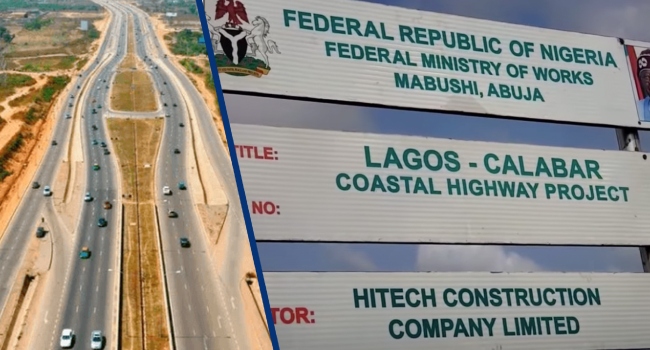Nigeria is embarking on one of its most ambitious infrastructure projects since independence: the proposed Lagos–Calabar Coastal Road. This 700-kilometer mega-highway will stretch from the bustling metropolis of Lagos in the southwest to the port city of Calabar in the southeast, cutting across eight coastal states. It is envisioned as a 10-lane dual carriageway (five lanes in each direction) with a standard-gauge rail line running down the middle, an unprecedented multi-modal corridor in this part of the world. Building such a coastal superhighway – much of it over swampy terrain and river deltas – is an engineering feat that promises to open up new economic frontiers. Yet, the project has become the subject of intense national debate.
On one hand, supporters tout the Lagos–Calabar Coastal Road as a game-changer that will enhance connectivity, spur regional development, and cement Nigeria’s status as an African economic powerhouse. On the other hand, critics have raised alarms about the staggering cost (estimated around N15 trillion, or $12 billion), potential environmental impacts, and the opaque contracting process so far.
Some prominent voices have even labeled the project “wasteful” or questioned whether it is driven by personal interests. The conversation, unfortunately, has often been framed as a binary “pro vs. anti” argument: Should Nigeria build this highway or not?
It’s time to reframe the conversation. Rather than a yes-or-no quarrel, the Lagos–Calabar Coastal Road should be discussed in terms of how to do it right. The real question is: How can Nigeria execute this visionary project in a way that maximises benefits, minimises risks, and sets a new standard for best practices?
By learning from global examples and candidly addressing the legitimate engineering, financial, and governance challenges, we can turn the coastal highway into a symbol of national pride and progress.
The sections below delve into these challenges and opportunities – from engineering hurdles to lessons from other countries – and lay out a roadmap for moving forward with transparency and accountability.
Engineering challenges of a coastal mega-highway
Constructing a 700 km coastal highway of this scale is not a simple task – it is a monumental engineering challenge. Nigeria’s coastline presents difficult terrain and technical obstacles that must be skillfully managed:
Difficult terrain and Geology: Much of the proposed route traverses low-lying mangrove swamps, water-logged soils, and delta marshlands. Building stable road foundations on soft, shifting ground requires advanced geotechnical solutions. Engineers will need to employ deep piling, soil stabilisation techniques, and possibly floating roadway sections in swamp areas. Without proper ground preparation, sections of the highway could sink or crack under their own weight or due to seasonal flooding.
Bridges and hydrological challenges: The highway will cross numerous rivers, estuaries, and creeks along Nigeria’s coast. Dozens of bridges (potentially some very long spans) must be designed to withstand strong currents and tidal forces. In addition, the road’s design must account for heavy rainfall and flooding common to the coastal region. Extensive drainage systems, culverts, and elevated causeways will be needed to prevent washouts. Hydrological modeling is essential so that the road does not obstruct natural water flow and exacerbate flooding inland.
Coastal erosion and climate factors: Being so near the shoreline, parts of the route may be exposed to coastal erosion, storm surges, and rising sea levels. Protective measures like sea walls, dikes or buffer zones might be required in certain segments to shield the highway from the ocean’s forces.
The design life of the infrastructure must consider climate change projections, ensuring resilience against more frequent extreme weather events in the future.
Design complexity (road + rail integration): Uniquely, the Lagos–Calabar project isn’t just a road – it includes a rail line within the highway corridor. Integrating a standard-gauge railway track down the median of a high-speed expressway is a cutting-edge concept that demands precise engineering.
Safety will be paramount: the design must prevent interference between road traffic and trains (likely through barriers and grade-separated crossings for the rail). Building two infrastructures side by side will also require careful planning of space and load distribution – the corridor is planned to be about 100 meters wide to accommodate lanes, rail tracks, and shoulders. Ensuring that the rail component is built to global standards is crucial, as a train failure could disrupt road traffic and vice versa. However, if successfully executed, this multi-modal design could dramatically enhance transport efficiency, moving people and freight by rail and road in parallel.
Material durability and construction technique: For a project of this magnitude, material choice and construction methods can make the difference between a highway that lasts decades versus one that crumbles prematurely. Notably, plans indicate the use of continuous reinforced concrete pavement instead of the conventional asphalt on this highway.
Concrete pavements are more durable in tropical, heavy-traffic conditions – many countries use them for major expressways – but they require skilled workmanship and quality control during construction. The entire stretch will also need to meet global safety standards – with proper signage, barriers, rest areas, and lighting, given its length and expected heavy usage.
These engineering challenges, while daunting, are surmountable with the right expertise and planning. Nigeria has successfully delivered complex projects in the past – from the Third Mainland Bridge in Lagos (one of Africa’s longest bridges) to major offshore engineering in the oil sector. By engaging experienced engineers and contractors, investing in detailed design studies, and not cutting corners on quality, the country can overcome the coastal highway’s technical hurdles. A comprehensive feasibility study and design review should be undertaken (if not already) by a consortium of local and international experts to ensure that the highway’s design is robust.
This includes in-depth geotechnical surveys, environmental impact modeling, and even learning from engineering solutions used in similar environments abroad. With state-of-the-art approaches – such as precast concrete segments for bridges, modular pavement construction, and real-time monitoring of settlement in filled areas – Nigeria can build a coastal highway that stands the test of time and nature.
Global best practices: Insights from the UK, USA, South Africa and the Middle East
Nigeria’s bold infrastructure vision is not happening in isolation. Around the world, countries have executed large highway projects in challenging contexts, offering valuable lessons in planning, execution, and management.
By examining global best practices – from advanced economies to fellow developing nations – we can glean insights to apply to the Lagos–Calabar Coastal Road. Below are a few pertinent examples:
United Kingdom – rigorous planning and oversight: The UK, though relatively small in size, has a long history of major infrastructure projects and a reputation for meticulous planning. Large projects such as the M25 London Orbital Motorway (a 188 km ring road around Greater London) and recent undertakings like the Crossrail urban railway were preceded by exhaustive feasibility studies, public inquiries, and phased execution plans. British best practice emphasises getting the plan right on paper first.
For the coastal highway, a UK-style approach would mean ensuring comprehensive route surveys, stakeholder consultations, and risk assessments before the first bulldozer moves. The UK also highlights the importance of oversight and transparency – independent watchdog bodies and parliamentary committees scrutinise big projects to keep them on track and on budget.
Emulating this, Nigeria could establish an independent project monitoring team (including engineers, financial experts, and civil society reps) to regularly audit and report on the coastal road’s progress. Additionally, the UK’s focus on maintenance – budgeting for upkeep at the project’s outset – is a lesson for Nigeria to plan not just for building the highway, but for maintaining it decades into the future.
United States – nation-connecting ambition and economic payoff: The United States undertook the Interstate Highway System in the 1950s–60s, a vast network of highways (over 75,000 km) that revolutionised transport and commerce. That experience underscores how transformative a well-executed highway can be: linking cities and states, reducing travel times dramatically, and fueling economic growth in newly connected regions.
Interstate routes like I-95 on the U.S. East Coast or I-10 across the South connect multiple states over thousands of kilometers, not unlike what the Lagos–Calabar road aspires to do across Nigeria. The U.S. example teaches us about phased development and federal support – the interstate network was built in sections over decades, with steady funding and political commitment through multiple administrations.
To be continued tomorrow.
Emmanuel-Ejidiran is the immediate past MD of Wemabod Limited and the current MD/CEO Gracemman Nig Ltd. a real estate and project management company based in Lagos.






